14th October 2015
Contributing Writer for Wake Up World
The word ‘tantra’ signifies confluence and integration; a fusion. Sanskrit for “loom”, a device which weaves together string into cloth, tantra is an ancient word with many properties and uses; it has been variously used to describe the knots of strings weaved together in a rug, and the cord on which sacred mala bead necklaces were strung. (Mala beads are Tibetan prayer necklaces of 108 beads used to assist mentally or vocally repeating a mantra 108 times.) Today the word tantra is often used in reference to the union of lovemaking.
More broadly, however, tantra notes a mutually accepted connection, a tied knot of intertwined being, like lovemaking, but not necessarily beginning with or limited to it. Humanity itself is a tantra; a fused weaving knot or many strings.
Essentially, tantra is spiritual understanding of the relationship between individuation and connection. An ancient spiritual philosophy preceding both Buddhism and Hinduism, tantra represents integration, unifying the macrocosm with the microcosm, the universal and the individual, the feminine and the masculine, the yin and the yang. It can also refer to integrative knowledge and its continuation and building through the interaction of teacher and student, signifying union and fusion; the acceptance, integration and transmutation of knowledge between individuals, like the string of life.
Tantra should not be confused with yantra yoga from Tibet, or yantras, the sacred geometric symbolism, just as the practice of yoga should not be confused with being simply asanas or physical postures. Yantra yoga is one of the oldest forms of yoga and because of the environmentally foreboding nature of Tibet and the varying secretive cultures of most meditative movements, it is said to be one of the purest and least altered forms of yoga. Yantra yoga concentrates on moving into and out of asanas with the breath, as opposed to being in a position for multiple breaths. However tantric ideas are metaphysical; the merging of the physical and spiritual. In essence, Tantra is the integration of yantra (a philosophy and visual symbol), mantra (oral communication) and mudra (meaning “gesture”, a physical positioning) — each of which is important intertwined aspect of yoga, and life.
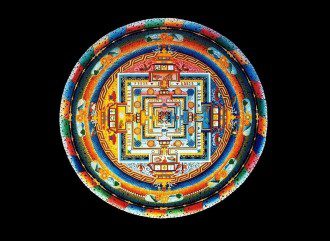
Teachers and Gurus
In the past a teacher or guru was a requirement for such esoteric instruction. Today there are not enough gurus relative to those who seek instruction, but there are also more ways to learn more practices than ever. For example, Tapping and Tai Chi, the 5 Tibetan Rites of Rejuvenation, and simple meditative practices are accessible foundational techniques that require little guidance. (Click the links for a guided introduction to each practice.)
The difference between a teacher and a guru is that gurus so profoundly embody a teaching or philosophy that merely being in their presence imparts answers without questioning. A guru has the ability to teach, learn and share spiritual and meditative knowledge, but also has the power to transmit a comforting presence, even a sense of bliss. Ideally we would all have gurus, not so that we are shown what path to follow, so that – with knowledge and comfort – we can come to know where we are going as we proceed on our own path, becoming powerful individuals on our own, aided by the wisdom and grace of those who have gone before us (without having to reinvent the wheel with each generation.) They are akin to the elders and healers of other ancient cultures, whose role is to share knowledge and pass esoteric wisdom on to others in their tribe.
Today in Tibet and the rest of the world, the number of empowered individuals – the teachers and gurus – is eclipsed by the number of institutionalized individuals who might benefit from their wisdom. In times past, the wisdom of gurus was sought by seekers of the highest order, but today, in this process of human ascension, the seekers’ numbers are rapidly growing. The institutionalized greatly outnumber the individuated; most of us are under the thumb of authorities, busy tending to survival within social constructs rather than building lives of individuation, later realizing the need to climb the mountain of enlightenment.
Om Mani Padme Hum ~ The mantra of Tibet has complex meaning suggestive of individual and universal connection, and is an invocation of benevolence and compassion.
The Plight of Tibet
Like the tantra, Tibet itself is a land of confluence, a land of intermingling cultures, ideas and ancient philosophies. Tibet and the surrounding region is a land of integration, where meditation practitioners spent most of their time in seclusion so as to develop their mind, body and spirit in the pursuit of oneness, of fusion with all that is. These yogis and wise gurus are capable of amazing feats, not the least of which was simply surviving in the extreme elevation Himalayan cold without heat or modern protections from the harsh mountainous elements. One of the first higher meditative practices in the esoteric Tibetan Buddhist yoga practice called Naropa yoga is the practice of inner fire, the creation of psychic heat, or Tummo.
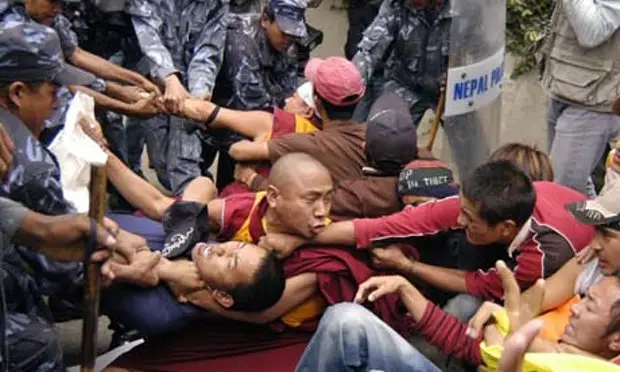
But today, Tibet’s gurus and the power of their inner heat have been overwhelmed, scattered by repressive authorities, driven from Tibet — along with their ancient philosophies — and driven to submission by the worldly ways of national and cultural institutions. The International Campaign for Tibet describes the factors at play succinctly:
Tibetans are denied the space to develop and express their distinct culture and identity as the Chinese government’s vision of progress and development takes shape in Tibet… China’s economic policies in Tibet are based on a political agenda that fails to consider Tibetan needs, views, and livelihoods…
Tibetans cannot freely study and practice their religion. Government restrictions on celebrating important Buddhist anniversaries and required denunciations of the Dalai Lama further demonstrate the exclusion of Tibetans from the decision making process that determines the practices of their daily lives…
Sadly, the gurus of Tibet who carry the wisdom of their forebears have been disenfranchised or eliminated, in the same way as the spiritual teachers of most of the world. It is just more recent and perhaps most starkly apparent in Tibet. While it is one of many places to be occupied by force, the forceful institutionalization of such a profoundly spiritual nation like Tibet is a distinct horror, revelatory of how low the priorities of humanity societies have sunk. The indigenous Tibetans have undergone forceful gentrification and destruction, as is typical of all institutional takeovers. The Chinese institutions are dominating and destroying the Tibetan culture of monastic mountain retreat, and societies around the world have allowed the apartheid-like rule of Tibet to happen without ever catalyzing a proactive political strategy or boycott of the Chinese aggressors.
Perhaps if Tibet was rich in oil resources, the West would be more interested. Perhaps if we were all less concerned with the materialistic and more interested in the fantastic, we would all be more interested.
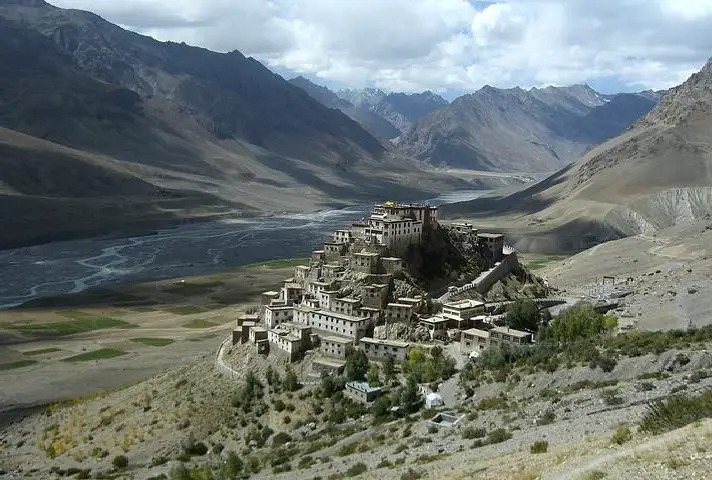
Where Imperialism and Spirituality Collide
Allowing one of the most spiritual and compassionate nations to ever exist is a sad example of the postmodern collective gone astray; of worldlings lacking spirituality, hungry and distracted by the mechanics of institutional imperialism. Given the state of our world today, we ought to assist and uphold those who seek to live concentrating on spiritual development. This was the way of Tibetan culture, which supported the pursuits of the monastic. But today in China there is rampant religious repression of Tibetan Buddhism, and Falun Gong, and Christianity, and likely any belief system that officials see as a potential threat or outlet for a threat to their institutional hierarchy.
Such cultural repression stems from the fact that spiritual devotion leads to individuation, to individual empowerment and, therefore, ultimately to the empowerment of the human collective. Institutions, including but not limited to China, would prefer to keep everyone in their domain controlled, quiet and unaware of their individual potential. Similarly, many martial arts have been deliberately changed over time so as to not allow people to develop their fighting ability, sure, but also to prevent them from gaining the potential metaphysical understandings inherent in their practice as well. Tai chi, for instance, has many times been transformed from an internal/metaphysical martial art – a tantra – to simple exercise, reducing the results and hiding its potential.
As I said, devoted practice to tantric principles leads to individuation, the opposite of imperial institutionalization.
Gate Gate Paragate Parasamgate Bodhi Svaha ~ the Heart Sutra, meaning “Gone, gone, gone beyond, gone completely beyond, enlightened, so be it.”
China recently enacted laws essentially taking over Tibetan Buddhist monasteries and instituting government officials at the few remaining monasteries, seeking instead to turn monasteries into propaganda centers for Chinese Communist philosophy. China also recently enacted a law attempting to limit Tibetan Buddhist reincarnation without government permission, and claiming the right to decide who is the next reincarnation of the Dalai Lama.
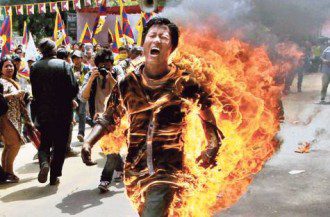
In reality, the Chinese involvement in Tibet was no short of a military takeover. In October 1950, China’s People’s Liberation Armyentered Tibet, defeating minor resistance from the Tibetan army, killing countless Tibetans, destroying thousands of monasteries. And China has remade the nation of Tibet as theirs ever since. Some Tibetans, cornered by rigid oppression, have resorted to self-immolation – the act of public self-sacrifice – in order to call attention to the corruption and gentrification of their culture. Many have set themselves on fire to raise awareness of their exploitation and cultural elimination, in the most desperate form of protest we have seen in modern history.
Traditionally, Tibet is a land of indigenous integration; the mountainous crossroads of Asia. Tibet was a spiritual nation, one of tantra and sharing, where many spent their entire lives dedicated to the spiritual journey and those around them supported them. This contrasts starkly to societies throughout most of the world today, that selfishly pursue materialistic and competitive goals, where assisting the spiritual development of others let alone following one’s own spiritual path are not primary considerations for most people; and in some cultures, like our own, derided.
The Dalai Lama — literally translated as “Ocean Guru” — the spiritual leader of Tibet is not chosen but rather found through spiritual predictions and tests concerning his lineage, not through familial heritage but through reincarnation. A custodian of wisdom, each Dalai Lama is believed to be the reincarnation of the great spiritual teacher, Avalokitesvara, the Bodhisattva of Compassion. The current Dalai Lama, Tenzin Gyatso, is the 14th reincarnation of Avalokitesvara, identified in 1935 by a member of the Tibetan monastery in a vision that led to his discovery.
Despite losing his homeland and despite his people being dispersed, and worse, the Dalai Lama remains positive, for even though Tibetan Buddhism is being restricted in Tibet by the encroaching imperialism of China it has been freed to the world. Its teaching, philosophies, tantras, mantras yantras and mudras have struck a chord of resonance with spiritual seekers the world over. One reason, among many, is that Buddhism holds the distinction of being the only established religion that does not claim to define the creator of life (known variously as God, Allah etc.) nor offer access to the creator through any “one true faith” — a ridiculous notion when one considers the common origins of religions and theologies. Distinguishing it from other religions, Buddhism is built on philosophies of life and enlightenment, not authorship of life itself. The central figure in Buddhism, both traditional (Theravada) and Tibetan, is not a creator but a philosopher, a bodhisattva, a being of bodhi (enlightenment) and universal compassion. Its teachings can therefore be accessed without submission to the “higher” external power extolled by other religious doctrines, but through the exploration of consciousness and being. This is where the gurus and teachers become an invaluable part of the process.
The idea of an “ocean guru” might be at first confusing, especially from the mountains of Tibet. However the ocean symbolizes consciousness, the ethereal force everywhere of which we are but a drop — though within us is an ocean unto ourselves. It represents our interconnection — the tantric element that binds all aspects of life.
This idea also reminds me of aspects of many meditations, Buddhist and otherwise, where one imagines being a conduit of compassion, ultimately visualizing that compassionate energy eventually crossing the oceans. One way I learned this is to meditate and imagine that your loving presence emanates and extends across the oceans. Begin with imagining the removal of suffering and instilling happiness to all sentient beings thirty miles beyond you, then three hundred miles, then throughout your continent, then across the ocean nearest you, then all oceans and then the whole world, and beyond. In order to really benefit from any meditation and meditative movement it’s important to include such compassionate thinking in your practice.
Source Article from http://wakeup-world.com/2015/10/14/tantra-mantra-yantra-and-tibet-where-imperialism-and-spirituality-collide/
 RSS Feed
RSS Feed















 October 13th, 2015
October 13th, 2015  Awake Goy
Awake Goy 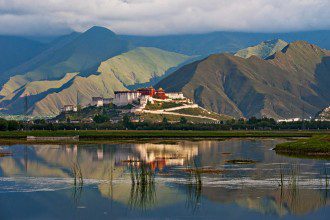

 Posted in
Posted in  Tags:
Tags: 













